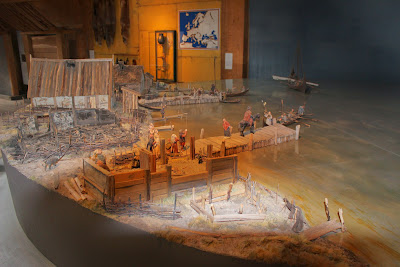Three years ago, the weather was warm and sunny, and Anastasia was the first kid in the splash pool. She fit in well with the locals, even if she couldn't understand what they were saying to her.

Bonus points for picking her out in this shot:

This time, the weather was much cooler, so we opted to stick with the drier options. The piggies were out, and they immediately drew the interest of all three kids.

Next it was off to the slide and climbing.

Then, Anastasia climbed onto the big swing, where she and the boys took a swing together just like she and her friend Ivar did 3 years ago.


Before heading home, we had to hit the merry-go-round. Last time we were here, Anastasia got dizzy all by herself. This time, she had the help of 2 boys who were having a ton of fun!
After a brief couple of hours at the playground, we headed back for a quiet afternoon of watching the World Cup and reminiscing with Kalle, Eva, and Christer while the kids played on the trampoline, the ring swings and in the playhouse. Anastasia wants to know how she can get one of these:

Very early the next morning, we said "Hej då" to Sweden. It didn't take long before Anastasia was asking when we're going to be back again. Many thanks to Eva and Christer, Lotta and Janne, Viktor, Kalle, Hedil and the rest of the friends and family that made our visit so lovely. We couldn't have asked for a better vacation.



















































